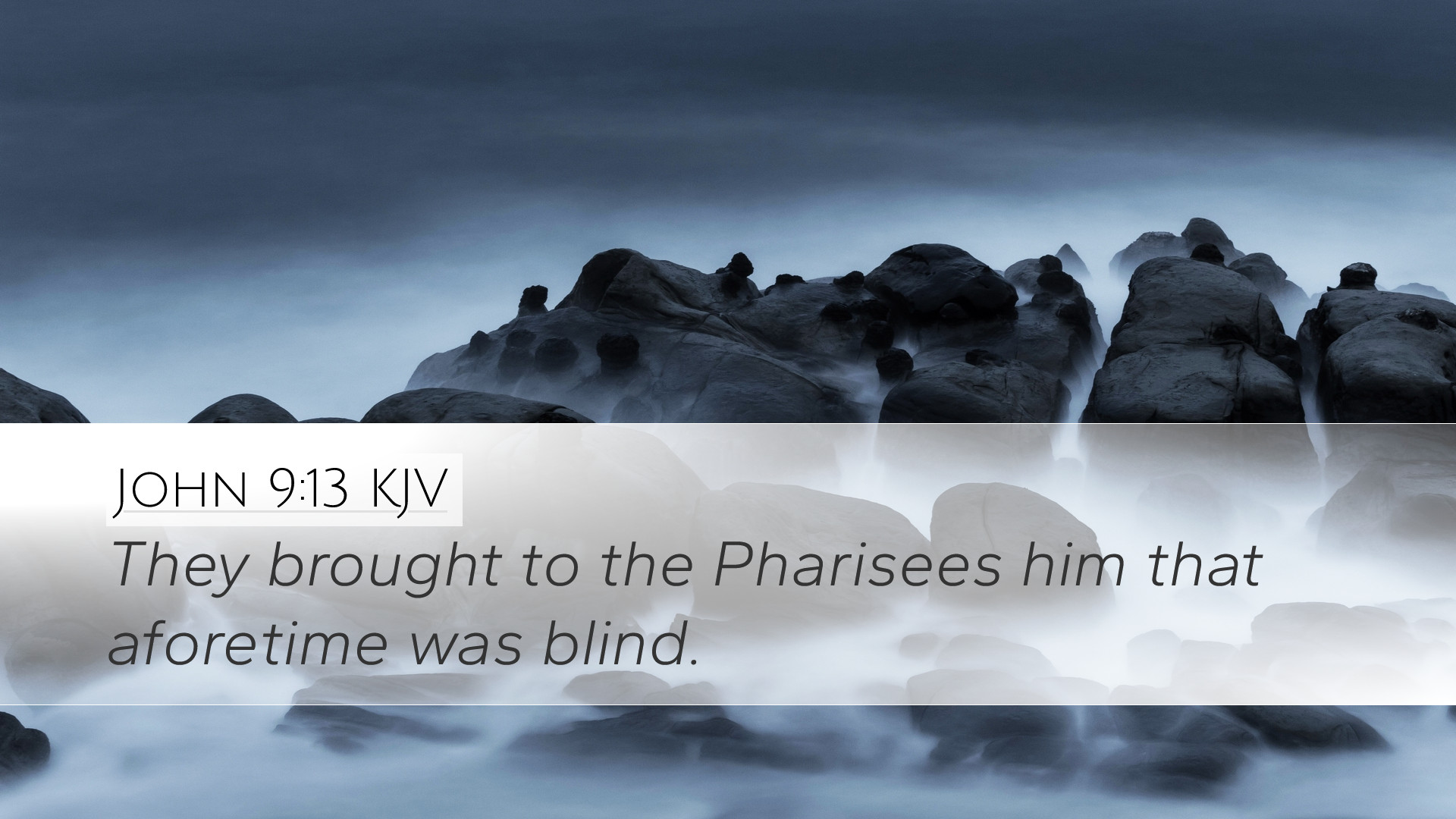Commentary on John 9:13
Verse Reference: John 9:13 – "They brought to the Pharisees the man who had been blind."
This verse marks a significant transition in the narrative of the healing of the man born blind. To fully grasp its importance, we explore various commentaries that provide a multi-faceted understanding of the text.
Contextual Analysis
Matthew Henry emphasizes the importance of context in understanding the miraculous event of healing that precedes this verse. The previous verses detail the extraordinary act of Jesus restoring sight to a man who was born blind. This miracle not only demonstrates Jesus' power over physical afflictions but also invites theological reflections on sin, divine purpose, and the nature of belief.
The Pharisees’ Involvement
According to Albert Barnes, this action of bringing the healed man to the Pharisees indicates the societal and religious protocols at play. The Pharisees were the religious authorities, and their reaction to the miracle was crucial not just for the man healed, but for the broader community. The man’s healing made an indelible impact on Judaic law and tradition, raising questions about observance of the Sabbath and the authority of Jesus as a healer.
Implications of the Healing
Adam Clarke notes that the communication of this miracle to the Pharisees served two purposes: the first being a fulfillment of Mosaic Law regarding healing on the Sabbath, and the second to challenge the authority and teaching of the Pharisees themselves. The act of reporting this healing acts as a catalyst for the ensuing debates and confrontations between Jesus and the religious leaders.
Responses from the Community
Henry points out the reaction of the community to the miracle is also significant. The act of bringing the healed man to the Pharisees demonstrates both awe and skepticism that permeated the society at that time. These societal dynamics offer insight into the conflict between emerging Christian beliefs and traditional Judaic practices.
Theological Reflections
This verse invites deeper theological reflection on several key themes:
- The Nature of Sin and Blindness: The healing of the blind man serves as an allegory for spiritual awakening, emphasizing that physical blindness can parallel spiritual blindness.
- Authority of Christ: The encounter with the Pharisees challenges their authority and understanding of God’s work, revealing the limitations of human interpretation in the face of divine intervention.
- Faith and Revelation: The narrative highlights the journey of faith and revelation, as the formerly blind man progresses from physical sight to spiritual insight, demonstrating the transformative power of Jesus.
Lessons for Today’s Readers
Barnes urges contemporary believers to consider how they respond to God’s intervention in their lives. The reluctance or outright opposition of the Pharisees serves as a cautionary tale about allowing tradition to blind one to new works of God.
Clarke adds that this moment illustrates the importance of seeking understanding and truth, even when it leads to challenging established beliefs. As believers today, there is a call to engage with the challenges of faith critically and thoughtfully, asking how indeed God is at work in the world around us.
Conclusion
In summary, John 9:13 serves as a pivotal point in the story of the blind man's healing, leading to significant theological debates and reflections. The transition from miraculous healing to examination by the Pharisees underscores key themes of authority, the nature of sin, and the call to spiritual awakening. As pastors, theologians, and students of the Bible reflect on this passage, they are encouraged to consider how it informs their understanding of faith and the ongoing work of Christ in the world.


